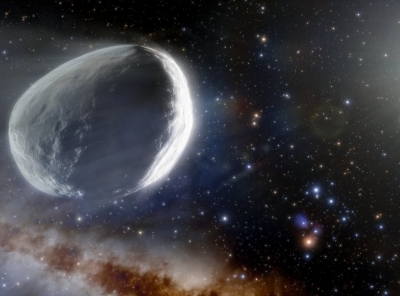
Pedro Bernardinelli spotted the comet that now bears his name just a week or so before he had to defend his dissertation. His doctoral thesis focussed on identifying trans-Neptunian objects (TNOS) – rocks that circle the sun beyond Neptune’s orbit.
While this has nothing to do with comets, his analysis using data called the Dark Energy Survey put him onto this particular comet. After he had ensured that it wasn’t an anomaly or fault on his part, he took the find to his advisor Gary Bernstein. An astronomer at the University of Pennsylvania, Bernstein’s scientific interest lies in looking for distortions that are caused by dark matter.
Size and activity
And so it happened that Bernardinelli and Bernstein discovered a celestial body that is now known as Comet Bernardinelli-Bernstein. While the discovery first excited scientists for the comet’s estimated size (100 to 200 km wide), increased observations invalidated the initial estimate. Regardless of the size, scientists have only spotted very few comets active so far from the sun.
Irrespective of size and activity, the most exciting aspect of the discovery of Comet Bernardinelli-Bemstein now is the fact that scientists will be able to study it for extended durations.
Decades-long look
Apart from the fact that this comet, which was discovered in 2021, will have its closest approach in 2031, there are also old observations about this comet from as early as 2010. This means that scientists can literally have a decades-long look at this object, something that is quite rare for comets that make long journeys.
As for Berardinelli and Bernstein, the discovery has brought them unexpected fame in an unrelated field. While Bernstein is pretty clear that he will stick with cosmology. Bernardinelli hasn’t ruled out changing his scientific trajectory to include actively studying comets as well.
Picture Credit : Google




